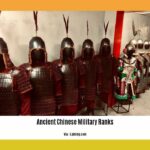The Great Wall of China – a colossal, winding structure etched into the landscape. Often perceived as merely a symbol of military might, a barrier built to keep invaders out, its story is richer and more intricate. The Wall wasn’t just about defense; it was a monumental project that profoundly shaped China’s economy, society, and culture. This is a tale of ambition, struggle, and enduring legacy. We’ll explore its impact on trade, the remarkable engineering feats it entailed, and even its failures. Prepare for a captivating narrative that unveils the Wall’s multifaceted role in Chinese history.
Unveiling the Great Wall’s Multifaceted Significance: A Deeper Look
The Great Wall of China, a seemingly endless dragon of stone snaking across the terrain, is easily seen as simply a massive barrier against invasion. However, its story involves ambition, trade, politics, and significant human cost. Let’s delve into the diverse aspects of this awe-inspiring feat of human engineering and explore its profound historical impact.
Beyond a Defensive Line: An Integrated System of Control and Influence
Envision the Great Wall not just as a physical barrier, but as a sophisticated, integrated system. Its primary function was defense against nomadic groups like the Xiongnu and Mongols, but it also represented much more than a simple defensive perimeter. It was a meticulously planned strategy encompassing border management, trade regulation, and the projection of imperial authority. This multi-century undertaking, continually modified and expanded by successive dynasties, reflected the evolving needs and aspirations of the empires themselves. The total length constructed over centuries is estimated to be over 13,000 miles (21,000 kilometers).
The Great Wall as an Economic Engine: Taxes, Trade, and Prosperity
The Wall played a pivotal, often overlooked role in the ancient Chinese economy. Its strategic location along ancient trade routes, including segments of the Silk Road, ensured that goods and travelers passed through strictly controlled checkpoints. These weren’t just points of entry; they were sophisticated customs areas where taxes were levied, trade was regulated, and population movement was meticulously supervised. Historical records indicate the Wall’s economic impact on the Chinese empires was substantial, contributing significantly to the wealth and power of ruling dynasties. It functioned as a vast customs and taxation system, generating considerable revenue and solidifying economic control.
Constructing National Identity: Symbolism and Propaganda Embodied in Stone
The various dynasties that contributed to the Great Wall didn’t simply add sections; they imprinted their distinct architectural styles and engineering innovations onto it. Each section reflects its era. One emperor might utilize brick, another rammed earth, and a third might incorporate more advanced fortifications. This constant evolution wasn’t solely about defense; it served as a potent political statement – a visible demonstration of imperial authority and a symbol intended to unify disparate regions. It conveyed the strength and reach of the empire to both its citizens and potential adversaries, fostering a sense of shared identity.
The Human Cost: Untold Stories Etched in Stone
The sheer scale of the Great Wall is staggering, but that magnitude came at a significant human cost. Millions of laborers, often conscripted, toiled under arduous conditions. Their stories, often overshadowed by imperial glory, are essential to understanding the Wall’s complete history. Their lives were inextricably linked to the Wall’s fabric, their struggles literally embedded within the stones. Remembering this human element provides a more compassionate understanding of this monumental undertaking. While precise figures are unavailable, estimates suggest hundreds of thousands, if not millions, perished during construction due to exhaustion, disease, and accidents.
Assessing Defensive Capabilities: A Shield with Limitations
Was the Great Wall completely impenetrable? The answer is nuanced. While it deterred or repelled smaller-scale raids, larger, more determined armies often discovered ways to circumvent it. The Mongols, for instance, were renowned for their mobility and strategic acumen; they frequently bypassed the Wall, employing superior tactics and alliances. Its effectiveness varied throughout history, contingent on the attacker and their strategy. The Wall wasn’t a magical shield preventing every incursion, but rather a deterrent and a logistical support system for border defense.
Tourism and Preservation: An Enduring Legacy
Today, the Great Wall stands as an iconic structure. Its remnants captivate and inspire awe, reminding us of the human effort and ambition behind its creation. It’s a UNESCO World Heritage site attracting millions of visitors annually. For China, it’s an integral symbol of national identity and pride, a powerful connection to its past. Its continuous cultural and touristic significance constitutes a substantial part of its lasting legacy.
Research and Discovery: Unveiling More Secrets
Preserving the Great Wall is a monumental task. Ongoing efforts involve collaborative international projects, cutting-edge technology, and educational initiatives. Much remains unknown about this colossal undertaking, particularly concerning less-studied sections. These investigations promise further insights into the Wall’s construction, its true purpose, and the societies associated with it. Archaeological surveys continue to uncover previously undocumented sections and fortifications, expanding our understanding of the Wall’s overall layout and defensive capabilities.
The Great Wall’s Construction: An Evolution Across Dynasties
The Great Wall’s construction spanned centuries, reflecting evolving engineering and shifting political landscapes. Each dynasty left its architectural stamp on the Wall. Let’s explore this evolution, considering how construction materials impacted longevity.
Early Walls: Simplicity and Adaptation (Earth and Wood)
The earliest sections, predating the Qin dynasty, relied on readily available materials: rammed earth, wood, and some stone. Construction adapted to the terrain, varying wildly in style and structural integrity. These walls were primarily defensive but also served other purposes, such as marking territorial boundaries.
The Qin Dynasty: Unification and Strategic Foundation
The Qin dynasty’s unification brought a degree of standardization, connecting and enhancing existing walls. While resources and techniques varied regionally, the Qin laid the groundwork for future monumental efforts, focusing on strategic connection rather than perfect uniformity. The Qin dynasty walls were primarily constructed of rammed earth reinforced with timber, reflecting the dynasty’s focus on rapid construction and resource mobilization.
Han Dynasty Innovations: Durability and Refinement (Brick and Stone)
The Han dynasty witnessed significant advancements, increasingly incorporating brick and stone, especially in strategically vital areas. Stronger materials provided greater durability and defensive capabilities. This period also saw the addition of strategically placed watchtowers and signaling systems, improving communication and coordination along the Wall’s length.
Later Dynasties: Maintenance, Adaptation, and Regional Variations
Subsequent dynasties, like the Sui, Tang, and Song, continued to maintain and expand the Wall, adapting construction techniques to local conditions and available resources. They often repurposed and reinforced existing sections, ensuring its continued effectiveness as a defensive barrier.
Ming Dynasty Masterpiece: Standardization and Scale
The Ming dynasty is synonymous with the iconic image of the Great Wall, implementing sophisticated engineering and standardized construction on a massive scale. Large-scale use of precisely cut stone and bricks created the imposing structures we recognize today. This involved meticulous planning, advanced logistics, and a large workforce. The Ming Dynasty walls featured advanced defensive features, including crenellations, loopholes for archers and firearms, and strategically placed watchtowers.
Environmental Challenges and Preservation
The Great Wall’s longevity is challenged by weather, erosion, and human activity. Preservation efforts need to consider these factors and the varying construction methods employed by each dynasty. The materials used affected the Wall’s vulnerability, requiring tailored conservation strategies. The Chinese government has implemented various preservation measures, including reinforcing vulnerable sections, restoring damaged areas, and promoting sustainable tourism practices.
Key Takeaways:
- The Great Wall’s construction evolved significantly across different dynasties.
- Early walls primarily used rammed earth and wood.
- Later dynasties increasingly incorporated brick and stone.
- The Ming Dynasty is associated with standardized construction using precisely cut stone and bricks.
- Diverse construction techniques present unique preservation challenges.
The Great Wall’s Economic and Social Impacts Across Dynasties
The Great Wall’s impact extended far beyond its military function, shaping China’s economy, society, and culture. Its construction spurred economic activity, influenced demographics, and became a potent symbol of national identity.
Key Takeaways:
- The Great Wall’s construction spurred significant economic activity.
- The Wall influenced population distribution and settlement patterns.
- Military needs dictated design, but it also became a symbol of imperial power.
- Economic and social impacts varied depending on the ruling dynasty.
- The Wall’s legacy extends to art, literature, and popular culture.
A Shifting Economic Landscape: Impact on Commerce
The Great Wall was a massive economic engine, providing employment for countless laborers and boosting China’s economic growth. It fueled demand for materials like timber and stone, boosting local industries. Furthermore, the Wall’s strategic placement facilitated regulating trade routes, creating an indirect economic boom in border towns and generating substantial revenue for the imperial treasury. Dynastic shifts influenced this economic impact, with some dynasties prioritizing expansion and others focusing on consolidation.
Demographic Shifts and Social Structures: Impact on Population Distribution
The Wall profoundly altered China’s demographics, necessitating the movement of large populations and leading to new communities along its path. It also served as a barrier, affecting the flow of people and ideas, resulting in a unique demographic landscape influenced by both the demands of construction and the limitations on migration. The social stratification was also impacted by the establishment of military garrisons and administrative centers along the Wall, creating new social hierarchies and economic opportunities.
Beyond Defense: A Symbol of Power and National Pride
While the Wall’s defensive function is undeniable, its role as a symbol of imperial power cannot be overlooked. Its sheer scale was a testament to the emperor’s might and the unified power of the empire. This symbolic value transcended mere military utility, shaping cultural identity and national pride. Images of the Great Wall became powerful symbols of Chinese strength and resilience, reinforcing a sense of shared identity and cultural heritage.
The Great Wall and Cultural Evolution: A Lasting Legacy
The Great Wall shaped art, literature, and popular culture. Artists throughout history have depicted the Great Wall, and poets painted vivid images of its grandeur and strategic importance. This cultural representation cemented the Wall’s place in the Chinese collective imagination, showcasing its lasting influence on Chinese identity and cultural values. The enduring presence of the Great Wall in Chinese culture serves as a constant reminder of the nation’s history, resilience, and ingenuity.
Evolution of Construction Techniques in Different Sections
The Great Wall’s construction spanned millennia, reflecting technological advancements and shifting priorities. This ongoing project showcased a fascinating evolution of construction techniques.
Early Stages: Rammed Earth and Pragmatism
The earliest sections, primarily from the Qin dynasty (221-206 BCE), were largely constructed from rammed earth, a simple yet effective method. This technique, readily available materials, and relatively inexpensive labor made it ideal for quick, large-scale construction, though susceptible to erosion and damage over time.
Refined Techniques: Brick and Stone
The Han dynasty (206 BCE – 220 CE) saw significant improvements. While rammed earth remained common, the use of fired bricks and stone became more prevalent, providing greater strength and resistance to weathering. Sections requiring exceptional durability utilized granite and limestone.
Ming Dynasty: Refinement and Standardization
The Ming dynasty (1368-1644 CE) marked a new chapter, standardizing construction methods and using vast amounts of brick and stone, incorporating crenellations and watchtowers for enhanced defense. Ming engineers demonstrated an impressive understanding of defensive architecture, designing a complex military system.
Material Variety: A Reflection of Region
The materials used varied substantially along the Wall’s length. Loess, abundant in the north, was a key component. Granite and limestone were utilized where available, reflecting local resources and geological formations. This adaptability is a testament to the ingenuity of the builders.
Beyond Defense: Multifaceted Roles
The Great Wall served as a significant trade route, facilitating the movement of goods and people. Its construction also stimulated economic growth, creating employment and stimulating local economies. Furthermore, it became a powerful symbol of Chinese identity and national pride.
Key Takeaways:
- The Great Wall’s construction spanned centuries, reflecting technological advancements.
- The choice of materials and construction techniques was influenced by geography and resource availability.
- Early sections primarily utilized rammed earth, while later sections incorporated bricks and stone.
- The Ming dynasty is known for its standardized construction methods.
- The Great Wall’s purpose extended beyond defense, influencing trade, economy, and national identity.
- Understand the Dunning-Kruger Effect: Why Incompetent People Think They’re Experts: Gain Self-Awareness - August 1, 2025
- Ignaz Semmelweis: The Doctor Fired for Handwashing: A Public Health Tragedy - August 1, 2025
- Unlock Your Memory: Spaced Repetition: The Scientific Trick to Remembering Information Forever: Learn Effortlessly - August 1, 2025
















